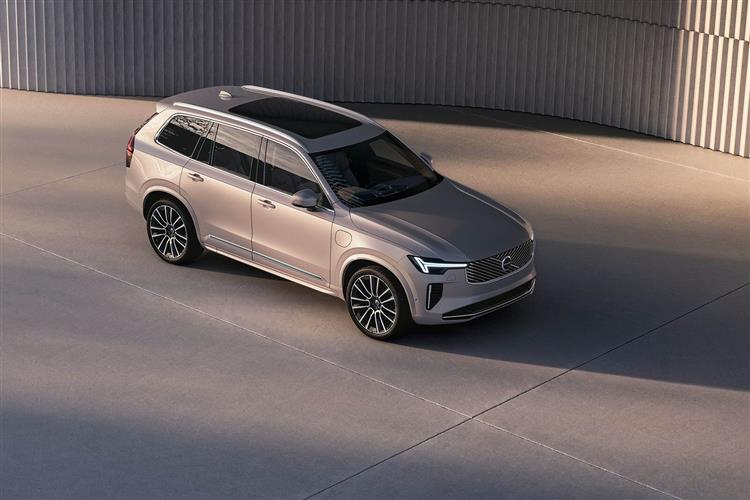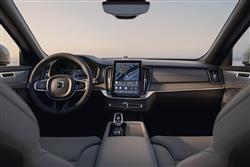B DIFFERENT (some text hidden) --NONE--
By Jonathan Crouch
The improved volume version of Volvo's second generation XC90 includes a mild dose of electrification. Jonathan Crouch takes a look at the B5 model.
Ten Second Reviewword count: 57
Volvo's second generation XC90 is a seven-seat luxury SUV that's already given key rivals like Audi's Q7 and the Land Rover Discovery a lot to think about. Safe, efficient, clever, practical and stylish, this car continues to position the Swedish maker as a credibly prestigious automotive brand. Here, we look at the mild hybrid B5 petrol version.
Backgroundword count: 150
Here's the car that began Volvo's modern era, the second generation XC90. This large luxury SUV established new standards for the brand when this model was originally announced back in 2014 and the company's recent move towards full electrification will re-set those standards once again. The improved XC90 model we're going to look at here, a range announced in the Autumn of 2025, has reflected that trend with a fresh look. Plus the line-up's got a light cabin update. Time to take a fresh look at this car. The engines are as before though, a mild hybrid B5 petrol unit and a fiery T8 PHEV. And all XC90s continue to provide the sort of proper full-sized seven-seat versatility that few rivals can credibly offer and a cool, authentic brand of Scandinavian charm that's really quite appealing. It all sounds promising doesn't it? Time to put this car to the test.
Driving Experienceword count: 252
With the demise of diesel, there's only a petrol-powered B5 XC90 model these days, but you might want it because it's substantially cheaper than the alternative T8 PHEV version. The mild hybrid drivetrain set-up is the same as when we first saw it in this car back in 2019, based around a 48-volt battery, a 'KERS' kinetic energy recovery system and an 'ISG' integrated starter-generator. Every time you brake or take your foot from the throttle, the 'KERS' set-up captures surplus energy and stores it as electricity in an extra battery provided in the boot. That additional electricity can be used to boost acceleration, help the stop/start system or power ancillary functions. The objective here wasn't to provide Prius-like periods of electric-only driving but instead make the engine more efficient via smoother transitions between driving, cruising and resting. That's all been aided by revisions to the automatic gearbox and the implementation of the brand's first brake-by-wire system. The engine puts out 250bhp and 62mph from rest occupies 7.7s en route to 112mph. As before, if you avoid base trim, you get the brand's 'Active Four-C Chassis' package, which gives you four-corner adaptive dampers and electronic air suspension. Handling strikes a good balance between comfort and agility; cruising refinement meets the required executive standard; and there's the potential for a mild amount of off road prowess. A standard 'Pilot Assist' system offers a degree of highway-orientated autonomous driving technology. And you might be interested to know this car can tow up to 2,400kgs.
To see the full road test text contact us on 0330 0020 227
Pictures (high res disabled)

.jpg)
|
.jpg)
|
.jpg)
| |||

|
Statistics (subset of data only)
Min |
Max |
|
Price: |
£63,790.00 |
£75,290.00 |
CO2 (g/km): |
193 |
|
Max Speed (mph): |
112 |
|
0-62 mph (s): |
7.7 |
|
Combined Mpg: |
32.8 |
|
Length (mm): |
4953 |
|
Width (mm): |
1958 |
|
Height (mm): |
1776 |
|
Boot Capacity (l): |
302 |
1102 |
... and 2 other stats available | ||
Scoring (subset of scores)
Category: Crossover or SUV 4x4s
| Performance | |
| Handling | |
| Comfort | |
| Space | |
| Styling, Build, Value, Equipment, Depreciation, Handling, Insurance and Total scores are available with our full data feed. | |



